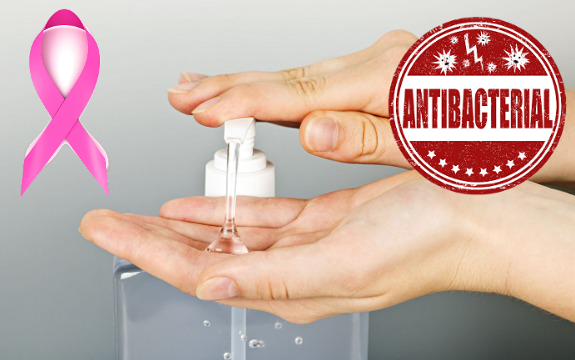Study Links Anti-Bacterial Agent Triclosan to Breast Cancer Cell Growth

 Triclosan is a known endocrine-disruptor, altering the normal metabolism and concentration of hormones in the human body. It’s been a topic of controversy for many years, as it’s found in common household items like soaps and even toothpaste. The latest study indicating potential long-term ill health effects from this compound indicates that triclosan could even lead to the increased growth of breast cancer cells.
Triclosan is a known endocrine-disruptor, altering the normal metabolism and concentration of hormones in the human body. It’s been a topic of controversy for many years, as it’s found in common household items like soaps and even toothpaste. The latest study indicating potential long-term ill health effects from this compound indicates that triclosan could even lead to the increased growth of breast cancer cells.
According to the study, published in the journal Chemical Research in Toxicology, in-vitro tests on human breast cancer cells in a lab, and in vivo tests in mice via tissue grafts both indicated increased breast cancer growth due to triclosan exposure.
As EcoWatch reports on endocrine disrupting chemicals (EDCs):
“Endocrine disruptors function by: (i) Mimicking the action of a naturally-produced hormone, such as estrogen or testosterone, thereby setting off similar chemical reactions in the body; (ii) Blocking hormone receptors in cells, thereby preventing the action of normal hormones; or (iii) Affecting the synthesis, transport, metabolism and excretion of hormones, thus altering the concentrations of natural hormones.“
In this particular study, triclosan and another EDC called octylphenol both altered the expression of two regulators which led to the proliferation of human breast cancer cells. As for the mice, those exposed to the EDCs had “larger and denser” breast cancer tumors than those who were not exposed.
“Although the doses of EDCs were somewhat high, we did this to simulate their effects of daily exposure, as well as body accumulation due to long-term exposure, simultaneously in animal experiments,” said researcher Kyung-Chul Choi, PhD.
Several large manufacturers, including Procter and Gamble, and Johnson and Johnson, have already signaled they will remove triclosan from their products due to triclosan dangers and consumer worries, but the EDC can still be found on shelves in numerous personal care items.
As for the other tested chemical, octylphenol is an “inert” chemical found prominently in pesticides. Because it’s classified as inert, pesticide makers don’t have to list it in the ingredients, merely post the weight of all combined inert ingredients within. This, many argue, misleads consumers into thinking the unmentionable ingredients are safe, which isn’t necessarily true.
“Consumers and users of pesticide products have a right to know all the ingredients that are in products they purchase so that they can make more informed choices in the marketplace,” said Jay Feldman of Beyond Pesticides, a group who has filed a complaint against the EPA for failing to disclose inert components.
